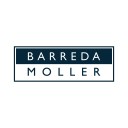Novelty requirement vs. non-obviousness requirement for the protection of industrial designs. A brief comparison between Peruvian and US laws

Published byBarreda Moller

An industrial design is defined as the appearance of all or part of a product, which intends to create, on the basis of its ornamental appearance, a visual impact on consumers. Therefore, an industrial design primarily dictated by the technical function of the product cannot be protected.
Moreover, according to the Peruvian legislation an industrial design must meet the novelty requirement. An industrial design shall not be considered new if, before the application filing date or claimed priority date, another industrial design having the same ornamental features was disclosed. Furthermore, an industrial design shall not be considered new by the mere fact of presenting secondary differences in relation to the nearest industrial design existing in the prior art, that is, in relation to the design with which it shares the greatest number of similarities. According to the Peruvian Patent Office, a difference between two industrial designs is considered secondary if the overall appearance of the compared designs is the same despite such difference.
On the other hand, according to the American legislation, an industrial design must meet the novelty and non-obviousness requirements. Thus, a claimed industrial design shall not be considered novel if in the prior art there is a design having the same ornamental features. Moreover, an industrial design will not meet the non-obviousness requirement if, for a person with ordinary skill in the design of the same kind of products, differences between the claimed design and the closest industrial design existing in the prior art are suggested by the latter, alone or in combination with other design, so that the creation of a design with the same visual appearance as the claimed design is obvious.
According to the above-mentioned, although the differences between the claimed design and the prior art are analyzed on the basis of different requirements in Peru and the United States of America, in both countries, industrial designs are not granted protection if said differences do not provide them with a different overall visual appearance. Accordingly, mere changes made on industrial designs are rejected in both countries. Therefore, there is not any substantial difference between Peruvian and American laws with respect to the requirements for granting protection to industrial designs.
References:
INDECOPI. Comisión de Invenciones y Nuevas Tecnologías. 2010. Resolución Nº 000017-2010/CIN-INDECOPI.
USPTO. 2015. Manual of Patent Examining Procedure (MPEP). Ninth edition. Available at: http://www.uspto.gov/web/offices/pac/mpep/s1504.html

